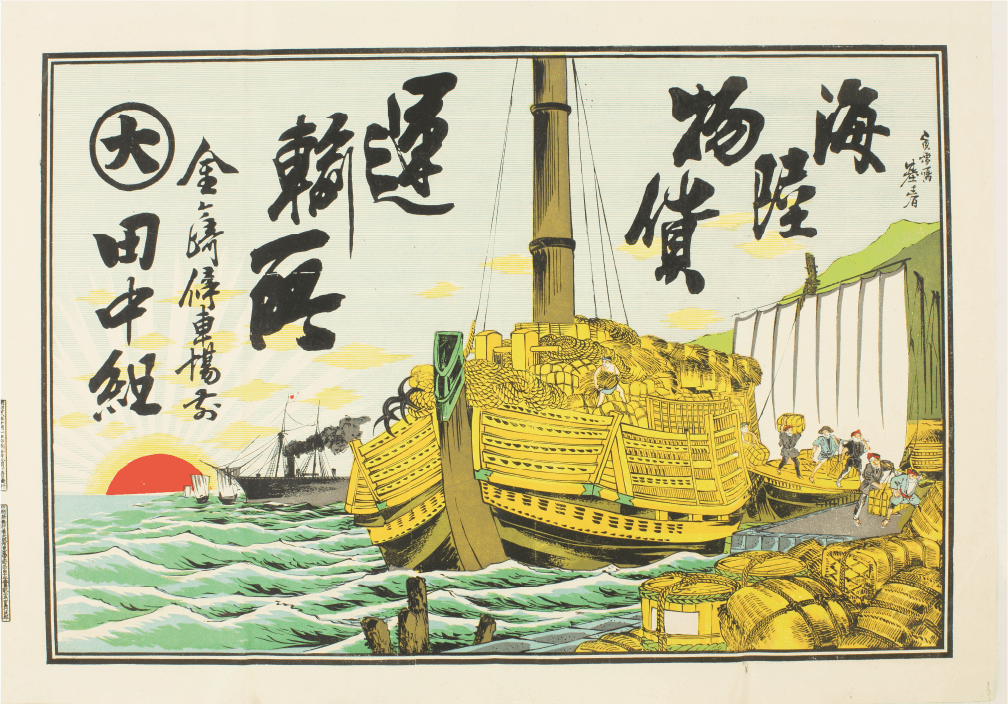
From the latter half of the Edo period to the early Meiji, Kitamaebune were trading ships that connected Hokkaido, Tohoku, and Hokuriku by way of Osaka. These ships were used to transport kelp and herring from Hokkaido to western Japan, while also serving as a means to buy and sell local goods from western Japan to other regions. Kitamaebune not only handled logistics, but also represented trading culture itself, purchasing goods from various local towns and transporting them to remote areas, then making large profits due to the differences in prices. The owners of the ships each had their own ways of conducting business, making profits and gaining massive wealth as a result.
The many ports of call for the Kitamaebune and shipowner settlements, as well as the related cultural assets, along the Japan Sea and Seto Inland Sea coastlines, including Tsuruga, have been designated as Japanese Heritage Sites by the Agency for Cultural Affairs, as they tell the story of the magnificent history of the Kitamaebune for us here today. The Yama floats of the Kehi Shingu shrine festival and the former Owada Bank head office building (Minato Tsuruga Museum’s annex building) are just some of the designated cultural properties of Tsuruga.
The Kitamaebune ship trade route and Tsuruga Port
As a relay point transporting goods from northern Japan to places like Kyoto, Tsuruga Port has been a prosperous area of commerce since long ago.
In Tsuruga, which was home to many of the Kitamaebune shipowners, the wealth brought in from the Kitamaebune since the Edo period became a force that kept the traditional culture of the region alive, including the Yama floats, and served as the foundation for modernization following the Meiji period.
